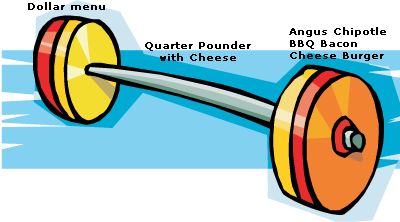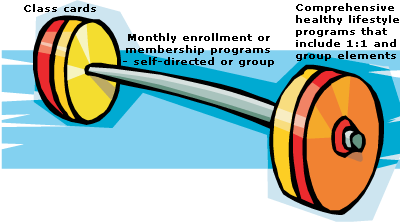Barbell pricing’s one answer when your wellness business has some customers who care a LOT about price -– and others who don’t worry about price at all.
How does barbell pricing work?
Fast food restaurants cracked this code a long time ago with a strategy called “barbell pricing” that works like this:
- On the left, you’ve got the products that appeal to price-sensitive customers — like the “any size soft drink for a dollar” deal. This keeps the customer who simply isn’t going to pay more than “X” dollars no matter how good the product is. Without this product, you get none of their business. With this product, you keep them as a customer –- and they may trade up to a more profitable product in the future.
- On the right, you’ve got the products that appeal to folks for whom price is secondary. At McDonald’s, this is often a customer who’s traded down from, say, Five Guys, but still wants something a little higher-end than a Quarter-Pounder.
- And in the middle, your core products and services.
Here’s how barbell pricing usually looks in the wellness world:
Now, do a quick diagnostic on your business:
- Make a quick drawing of a barbell on a sheet of paper.
- Jot down all your value-priced services and programs on the left. These are the items that attract price-sensitive customers.
- On the far right, jot down all your high-end, high-value programs. These are usually the comprehensive programs, the “all you can eat” services, the ones with the highest degree of individualized attention.
- Now, in the middle, list everything that’s left.
Is your barbell balanced? Or does it tilt to the right or the left?
It’s not necessarily a bad thing if it tilts –- as long as it’s consistent with your strategy for the business.
If it tilts in the wrong direction, look at which programs need more emphasis, perhaps more marketing and more visibility –- and which programs need to be discontinued or downplayed.






